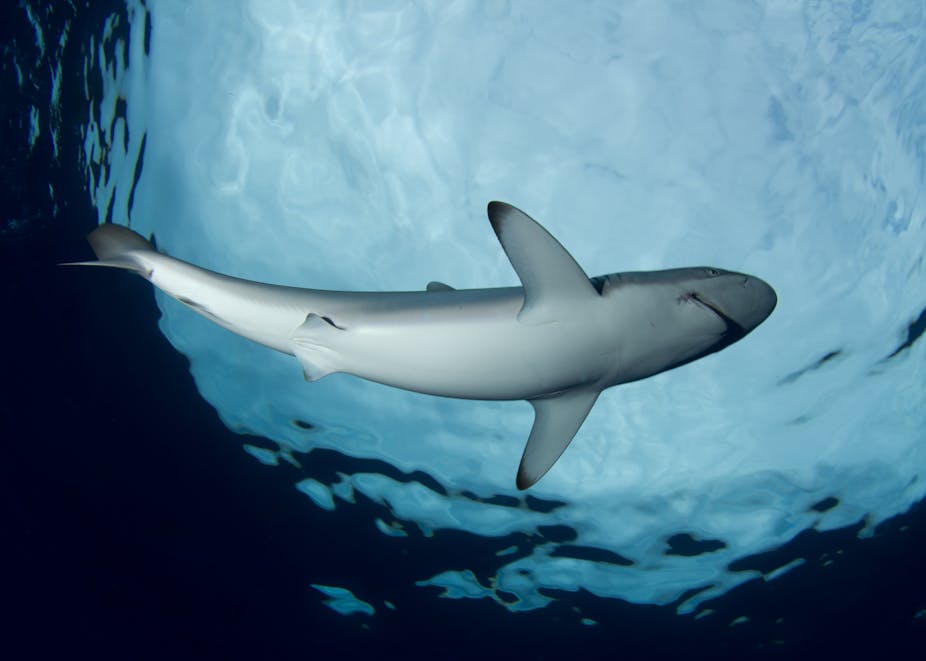Three years ago there was a significant shift in global shark conservation and management. Two thirds of the countries meeting in Bangkok, Thailand under the banner of CITES recognised, for the first time, that the lucratively traded marine species could be regulated by the global convention.
At CoP16, the first commercially traded shark species – the oceanic whitetip, three species of hammerheads (great, scalloped and smooth) and porbeagle sharks – were listed on appendix II of the convention. This only allows trade under very specific conditions and requires exporting countries to obtain a permit. Importing countries are exempt.
The Bangkok decision was a watershed. At previous meetings Japan and China had argued that it wasn’t possible to regulate trade because of the difficulty of identifying species once fins are detached from the shark. Their position undermined CITES’ ability to sustainably manage the fin trade.
Building on the momentum of the previous meeting, the protection has been expanded to cover a number of new species. CoP17 provisionally adopted proposals to list silky sharks, the thresher sharks (common, big-eye, and pelagic), and the nine species of mobula/devil rays on CITES appendix II.
The proposals were openly contested by countries that either consume shark fins and meat, or mobula ray gill-plates, or those which benefit financially from this unsustainable trade such as China, Japan, Indonesia, Saint Kitts and Nevis, Iceland and Nicaragua.
The margins by which the proposals were adopted demonstrates how the world is starting to recognise the severe threats to sharks and rays. While the CoP16 proposals passed by only a couple of votes, the outcome at CoP17 was encouragingly different. Votes on the silky and thresher sharks and mobula rays surpassed the required two thirds majority.
The changes will not be fully adopted until they pass the plenary session, where opponents may chose to reopen the debate if they can secure one third of the parties present to support them.
Vulnerability
The group of fishes known as elasmobranchs (sharks, skates and rays) share the common trait of being made up of cartilage (Chondrichthyans) in contrast to other bony fishes such as snappers (Teleosts). These cartilaginous fish share life-history characteristics such as slow growth rates, late maturity and low fecundity. These qualities make them vulnerable to overexploitation.
Similarly, once populations are depleted their characteristics dictate that populations are very slow to recover.
Fisheries are the primary threats to sharks. An estimated 100 million sharks are removed from our oceans annually. They are sometimes the intended target of commercial or artisanal fisheries, or are retained as by-catch because of the financial incentive for fisherman to keep the fins. Other less significant threats include critical habitat loss through the dredging of mangroves or degradation of coral reefs and marine pollution.
Globally many shark species are experiencing severe populations declines. The most severely affected are large bodied sharks that have regular contact with large-scale commercial fisheries. These include tuna, swordfish longlines and purse seines.

They have the most valuable fins in the trade. This is because of their size, as well as the content of ceratotrichia or “fin-rays”, the primary ingredient of shark fin soup. This gives fisherman extra incentive to retain catches of large bodied sharks even if they are not the targeted species of the fishery.
The already listed shark and rays species as well as those provisionally adopted at CoP17 constitute a large percentage of the global shark fin trade. These species are recording dramatic population declines in the major oceans.
Why sharks matter
Sharks fulfil a crucial role in maintaining marine ecosystem health in both coastal regions as well as seas away from landmasses. These are known as pelagic systems.
Many large bodied sharks, such as the species prevalent in the international shark fin trade, are top predators in their ecosystems. Through top-down predation pressure they regulate the health of fish communities by consuming weak or sick prey individuals. This ensures that a healthy gene pool is maintained.
Most importantly, they control the numbers of prey at each successive trophic level below them. For example on a coral reef sharks eat barracudas, which in turn eat parrotfish. If you remove sharks there is no predation pressure on the barracudas and their population increases. Because there are more barracudas in the system they consume more parrotfish and the parrotfish population decreases.
This is critical because parrotfish are herbivores. They graze on fast growing algae, which ensures reefs are coral dominated and not algae dominated systems. Coral reefs are some of the most productive marine ecosystems in the world and many fisheries depend on them. If reefs become algae dominated this could jeopardise fisheries and threaten the income and food security of those who depend on them.
Next steps
A number of developments were pivotal to shark listings being adopted by CITES Bangkok. These include the development of a simple step-by-step visual identification chart designed by Debra Abercrombie. The chartallows customs and enforcement officials to rapidly determine if the shark fin belongs to a CITES listed species.
The chart, much cheaper than previously used genetic techniques, has made it possible to produce an instant result. This has allowed enforcement agencies to freeze a shipment if they have probable cause to do so. This in turn allows time for genetic testing, which is needed for prosecution in court.
A further development has been a wider acknowledgement that regional fisheries management organisations failed to adequately manage sharks.
The case for expanding the list of internationally traded shark species protected under CITES, as provisionally adopted at CoP17, is indisputable. We don’t believe that a total ban is necessary or practical. But listing them under appendix II should be viewed as a measure to ensure sustainable shark fisheries.

